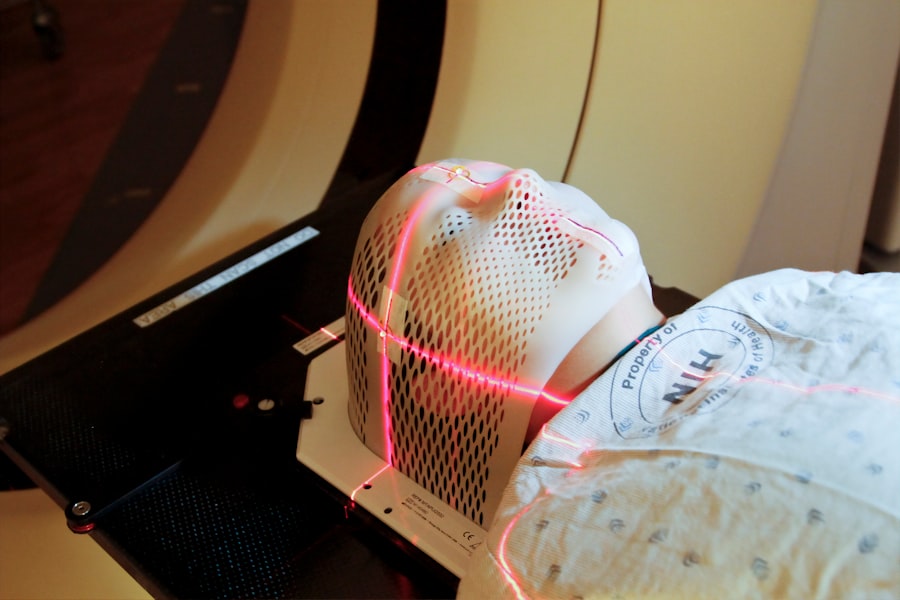In recent years, laser hair removal has emerged as a popular choice for those seeking a long-term solution to unwanted body hair. If you’ve ever found yourself frustrated with the constant upkeep of shaving or the discomfort of waxing, you may be considering this innovative method. Laser hair removal offers a more permanent alternative, allowing you to enjoy smooth skin without the hassle of regular grooming.
As you delve into this topic, you’ll discover how this technology works, what to expect during the procedure, and how to choose the right provider for your needs. The appeal of laser hair removal lies not only in its effectiveness but also in its convenience. Imagine a life where you no longer have to schedule regular appointments for waxing or spend time each week shaving.
Instead, you can enjoy the freedom of smooth skin with minimal maintenance. As you explore the ins and outs of this treatment, you’ll gain a deeper understanding of how it can fit into your lifestyle and enhance your self-confidence.
Key Takeaways
- Laser hair removal is a popular method for long-term hair reduction and elimination.
- The science behind laser hair removal involves targeting the hair follicles with concentrated light energy to inhibit future hair growth.
- The process of laser hair removal involves multiple sessions to achieve the best results, as hair grows in different cycles.
- Different types of lasers, such as Alexandrite, Diode, and Nd:YAG, are used for laser hair removal, each with its own advantages and limitations.
- During a laser hair removal session, patients can expect some discomfort, redness, and swelling, but these side effects are usually temporary.
The Science Behind Laser Hair Removal
At the core of laser hair removal is a fascinating interplay of light and heat. The procedure utilizes concentrated beams of light that target the pigment in hair follicles. When the laser is applied, it emits energy that is absorbed by the melanin in the hair.
This absorption generates heat, which effectively damages the follicle and inhibits future hair growth. Understanding this process can help you appreciate the technology behind this popular treatment. The effectiveness of laser hair removal is largely dependent on the contrast between your skin tone and hair color.
Darker hair absorbs more light than lighter hair, making the treatment more effective for individuals with light skin and dark hair.
As you consider this option, it’s essential to consult with a professional who can assess your unique characteristics and determine the best approach for you.
The Process of Laser Hair Removal

When you decide to undergo laser hair removal, the process typically begins with a consultation. During this initial meeting, your provider will evaluate your skin type, hair color, and medical history to create a personalized treatment plan. This step is crucial, as it ensures that the procedure is tailored to your specific needs and goals.
You’ll also have the opportunity to ask any questions or express concerns about the treatment. Once you’re ready to proceed, the actual laser hair removal session will take place. You’ll be given protective eyewear to shield your eyes from the laser light, and a cooling gel may be applied to your skin to enhance comfort during the procedure.
The provider will then use a handheld device to deliver laser pulses to the targeted areas. While some individuals report feeling a slight snapping sensation similar to a rubber band, most find the discomfort manageable. The duration of each session varies depending on the size of the area being treated, but many sessions last anywhere from 15 minutes to an hour.
Understanding the Different Types of Lasers Used
| Laser Type | Wavelength | Application |
|---|---|---|
| Gas Lasers | Visible and Infrared | Medical, Cutting, Welding |
| Solid-State Lasers | Visible, Infrared, Ultraviolet | Material Processing, Medical, Research |
| Semiconductor Lasers | Visible and Infrared | Telecommunications, Barcode Scanners, Laser Pointers |
| Fiber Lasers | Infrared | Metal Cutting, Marking, Engraving |
As you explore laser hair removal options, it’s important to familiarize yourself with the various types of lasers available. Each type has its own unique characteristics and is suited for different skin types and hair colors. The most commonly used lasers include Alexandrite, Diode, and Nd:YAG lasers.
Each of these lasers operates at different wavelengths, which affects their ability to penetrate the skin and target hair follicles effectively. The Alexandrite laser is known for its speed and effectiveness on lighter skin tones with dark hair. It operates at a wavelength of 755 nm, making it ideal for larger areas like legs or backs.
On the other hand, the Diode laser is versatile and can be used on a variety of skin types, including darker skin tones. It operates at a wavelength of 810 nm and is particularly effective for coarse hair. Lastly, the Nd:YAG laser operates at a longer wavelength of 1064 nm, making it suitable for all skin types, especially those with darker complexions.
Understanding these differences will empower you to make informed decisions about your treatment.
What to Expect During a Laser Hair Removal Session
As you prepare for your first laser hair removal session, it’s natural to feel a mix of excitement and apprehension. Knowing what to expect can help ease any anxiety you may have. Upon arrival at the clinic, you’ll likely be asked to fill out some paperwork and confirm your medical history.
Once you’re ready, your provider will guide you through the process step by step. During the session itself, you may experience some discomfort as the laser targets your hair follicles. However, many clinics offer cooling devices or topical anesthetics to minimize any pain.
The sensation can vary from person to person; some describe it as a mild sting or warmth on the skin. After each pulse of the laser, your provider will assess your comfort level and adjust settings as needed. Once the session is complete, you’ll be given aftercare instructions to ensure optimal results.
Benefits and Risks of Laser Hair Removal

Laser hair removal boasts numerous benefits that make it an attractive option for many individuals. One of the most significant advantages is its long-lasting results; after completing a series of sessions, many people experience permanent hair reduction in treated areas. Additionally, laser hair removal is precise, targeting only the hair follicles while leaving surrounding skin unharmed.
This precision minimizes irritation and reduces the risk of ingrown hairs—a common issue with traditional hair removal methods. However, like any medical procedure, there are risks involved with laser hair removal that you should be aware of before proceeding. Some individuals may experience temporary side effects such as redness, swelling, or mild discomfort in the treated area.
In rare cases, more severe reactions like blistering or changes in skin pigmentation can occur. It’s essential to discuss these risks with your provider during your consultation so that you can make an informed decision about whether this treatment is right for you.
Aftercare and Maintenance
After your laser hair removal session, proper aftercare is crucial for achieving optimal results and minimizing any potential side effects. Your provider will likely recommend avoiding sun exposure for at least a week following treatment, as your skin may be more sensitive during this time. Applying sunscreen diligently can help protect your skin from UV damage and prevent pigmentation changes.
In addition to sun protection, it’s important to avoid hot showers, saunas, or intense workouts for a few days post-treatment to reduce irritation. You may also be advised against using harsh skincare products on the treated area until it has fully healed. Following these aftercare guidelines will not only enhance your results but also contribute to a smoother recovery process.
Choosing the Right Provider for Laser Hair Removal
Selecting the right provider for your laser hair removal treatment is one of the most critical steps in ensuring a positive experience and successful results. Start by researching clinics in your area and reading reviews from previous clients. Look for providers who are licensed and experienced in performing laser hair removal procedures.
During your consultation, pay attention to how comfortable you feel with the provider and their staff.
Additionally, they should conduct a thorough assessment of your skin type and hair color before recommending a specific treatment plan.
By choosing a reputable provider who prioritizes patient care and safety, you can embark on your laser hair removal journey with confidence. In conclusion, laser hair removal offers an effective solution for those seeking long-term relief from unwanted body hair. By understanding how it works, what to expect during sessions, and how to care for your skin afterward, you can make informed decisions about this treatment option.
With careful consideration in choosing a qualified provider and adhering to aftercare guidelines, you can enjoy smooth skin and newfound confidence for years to come.
If you are interested in learning more about laser hair removal, you may want to check out this article on the latest fashion trends and laser hair removal. This article discusses how laser hair removal can help you achieve smooth, hair-free skin that is perfect for showcasing the latest fashion styles. It also provides tips on how to care for your skin after laser hair removal treatments to ensure the best results.
FAQs
What is laser hair removal?
Laser hair removal is a cosmetic procedure that uses a concentrated beam of light (laser) to remove unwanted hair. The laser targets the pigment in the hair follicle, damaging the follicle and inhibiting future hair growth.
How does laser hair removal work?
During laser hair removal, the pigment in the hair follicle absorbs the laser light, which then converts to heat. This heat damages the follicle, inhibiting its ability to produce new hair.
Is laser hair removal permanent?
Laser hair removal can lead to long-term hair reduction, but it is not always permanent. Multiple sessions are usually required to achieve the best results, and maintenance treatments may be needed to sustain the effects.
What areas of the body can be treated with laser hair removal?
Laser hair removal can be used to treat unwanted hair on various areas of the body, including the face, legs, arms, underarms, bikini line, and back.
Is laser hair removal safe?
When performed by a qualified and experienced professional, laser hair removal is generally considered safe. However, there are potential risks and side effects, such as skin irritation, redness, and changes in skin pigmentation.
Who is a good candidate for laser hair removal?
Laser hair removal is most effective for individuals with light skin and dark hair, as the laser targets the pigment in the hair follicle. People with darker skin tones may require specialized lasers to minimize the risk of skin damage.






